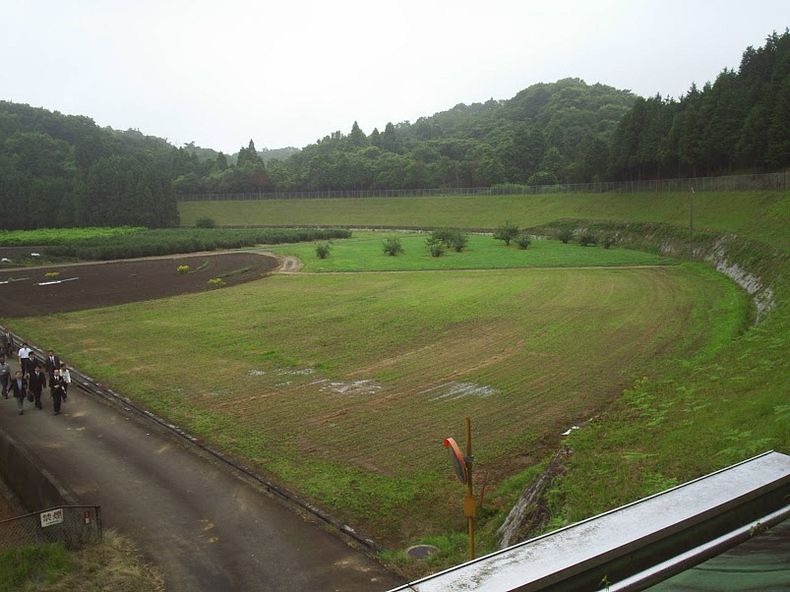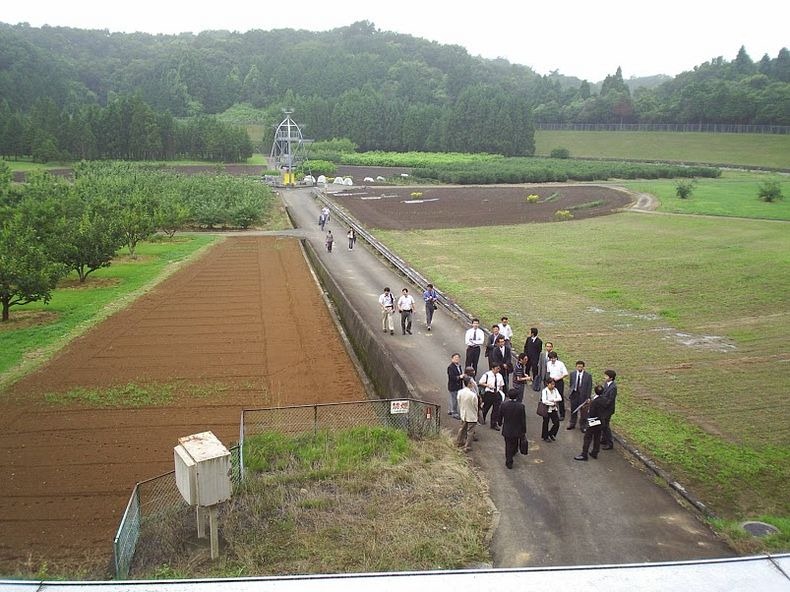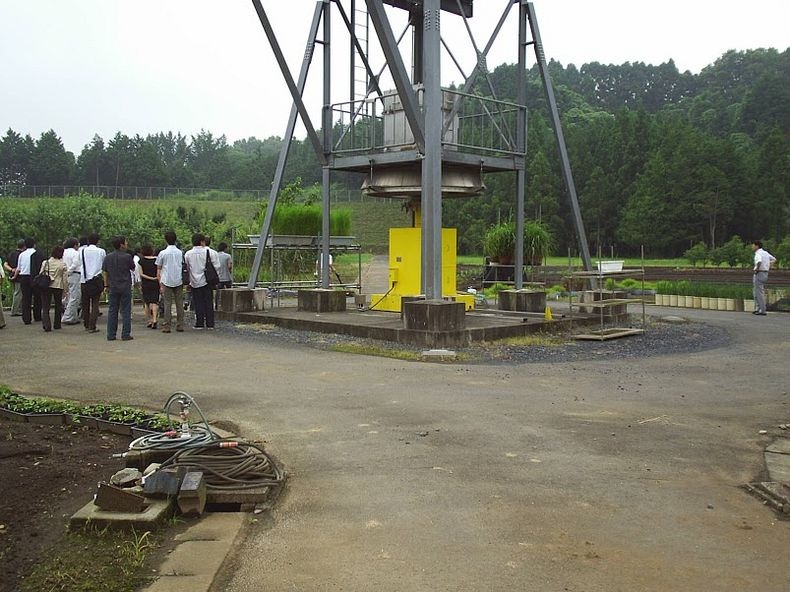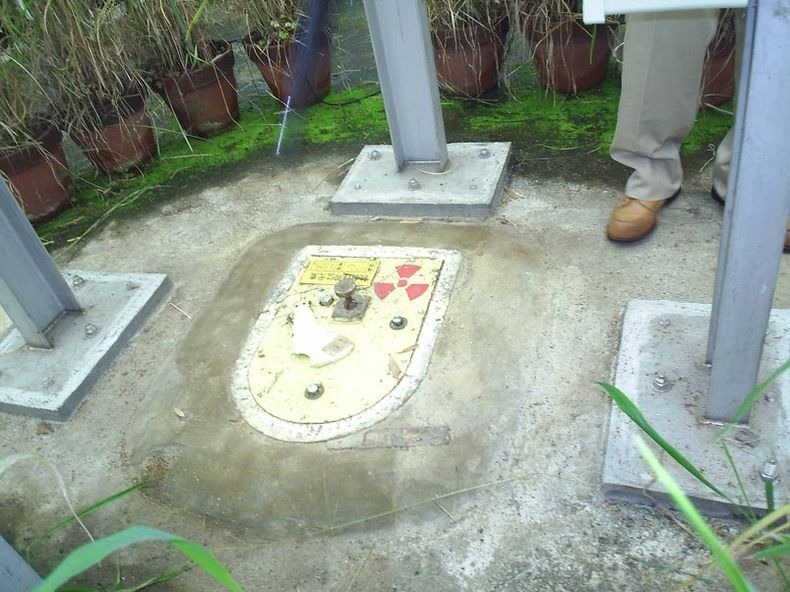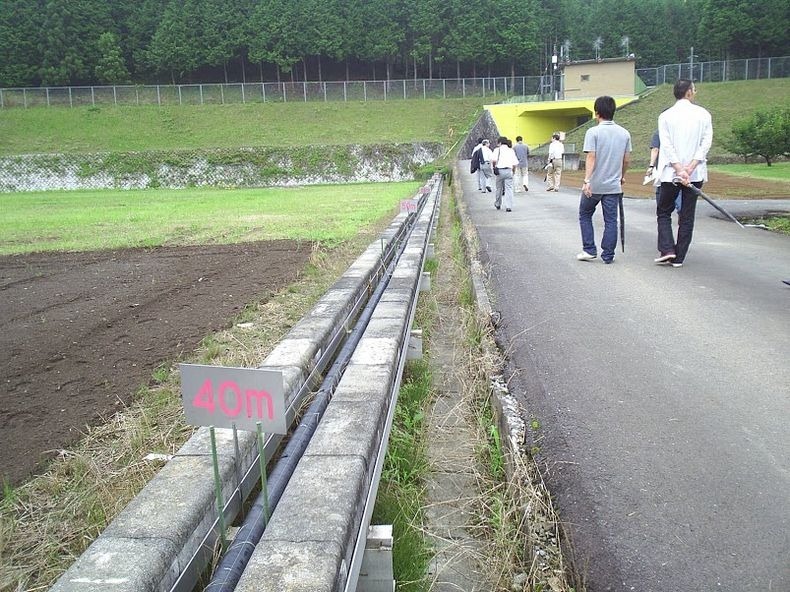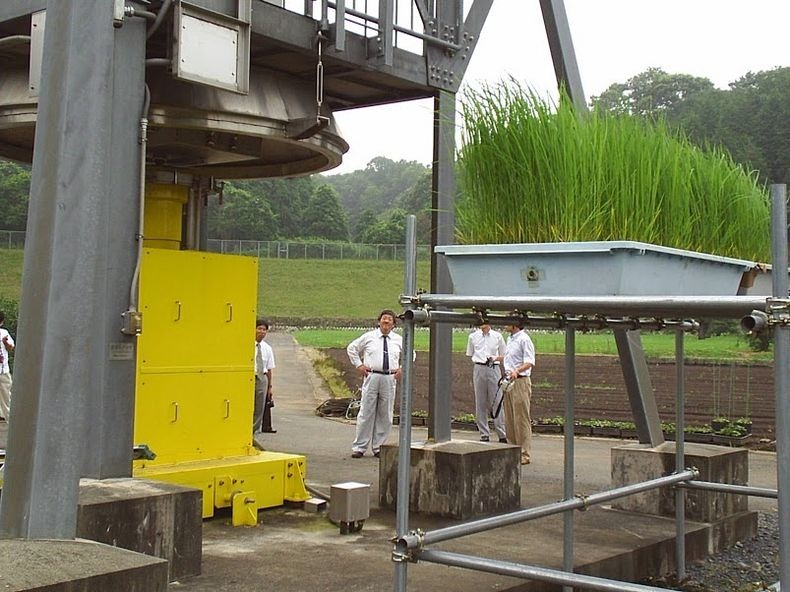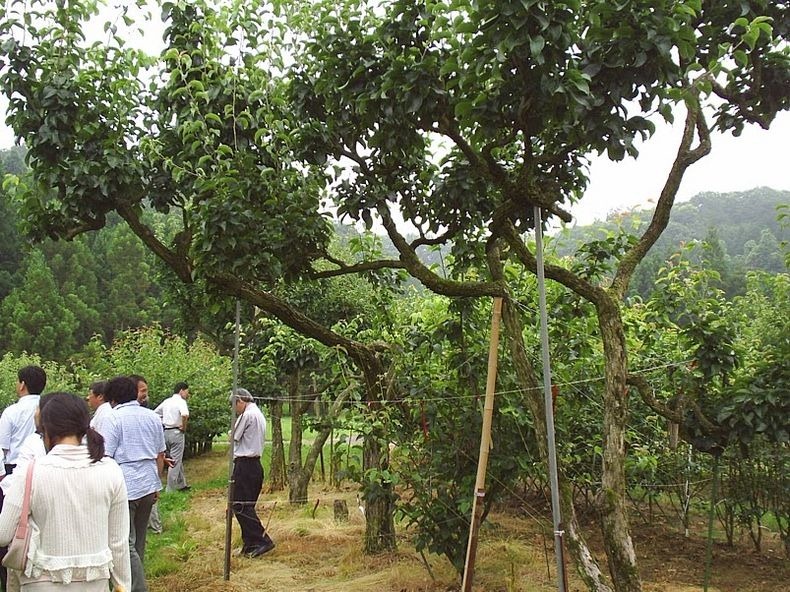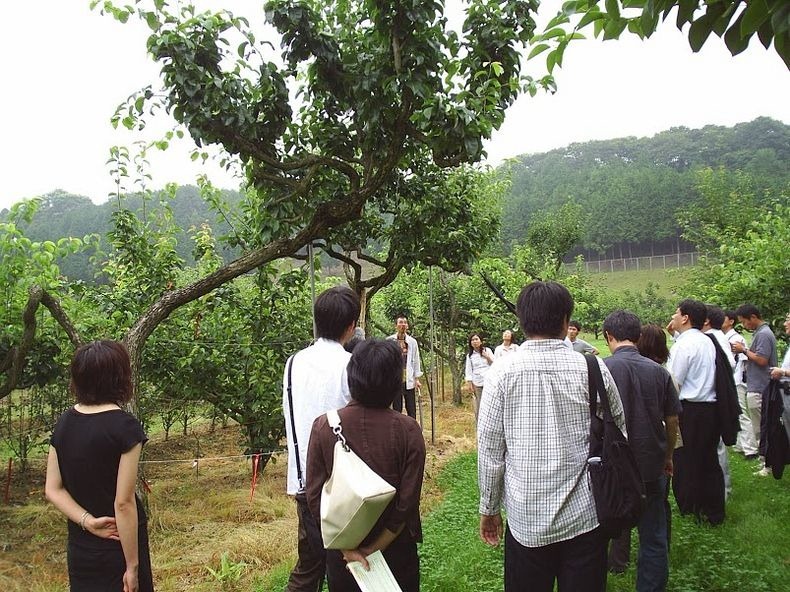
Modern genetic engineering has replaced the need for atomic gardening, but the legacy is still carried forward by the Institute of Radiation Breeding in Japan, which currently owns the largest, and possibly the only surviving gamma garden in the world, at Hitachiōmiya in Ibaraki Prefecture. The circular garden measures 100 meters in radius, and enclosed by an 8-meter high shielding dike wall. Species within are irradiated with gamma rays from a cobalt-60 source placed inside a central pole. The purpose here is to generate new traits such as tolerance to fungus infection or consumer-friendlier fruit colors, and in general, help meet demands for development of crop varieties with new traits.
Nanotechnologist Paige Johnson of the University of Tulsa, Oklahoma, who researches atomic garden history in her spare time, says: "If you think of genetic modification today as slicing the genome with a scalpel, in the 1960s they were hitting it with a hammer". Indeed, before scientist learned how to modify genes, they induced mutations with radiation and hoped for the best.
Paige describes about these gamma garden in an interview to Pruned, that is worth reading.
It was basically a slug of radioactive material within a pole; when workers needed to enter the field it was lowered below ground into a lead lined chamber. There were a series of fences and alarms to keep people from entering the field when the source was above ground.According to Dr. Lagoda, the head of plant breeding and genetics at the International Atomic Energy Agency, radiation breeding has produced thousands of useful mutants and a sizable fraction of the world’s crops, including varieties of rice, wheat, barley, pears, peas, cotton, peppermint, sunflowers, peanuts, grapefruit, sesame, bananas, cassava and sorghum.
The amount of radiation received by the plants naturally varied according to how close they were to the pole. So usually a single variety would be arranged as a 'wedge' leading away from the pole, so that the effects of a range of radiation levels could be evaluated. Most of the plants close to the pole simply died. A little further away, they would be so genetically altered that they were riddled with tumors and other growth abnormalities. It was generally the rows where the plants 'looked' normal, but still had genetic alterations, that were of the most interest, that were 'just right' as far as mutation breeding was concerned!
